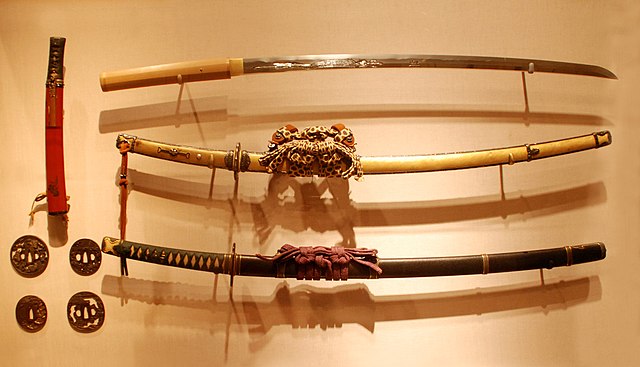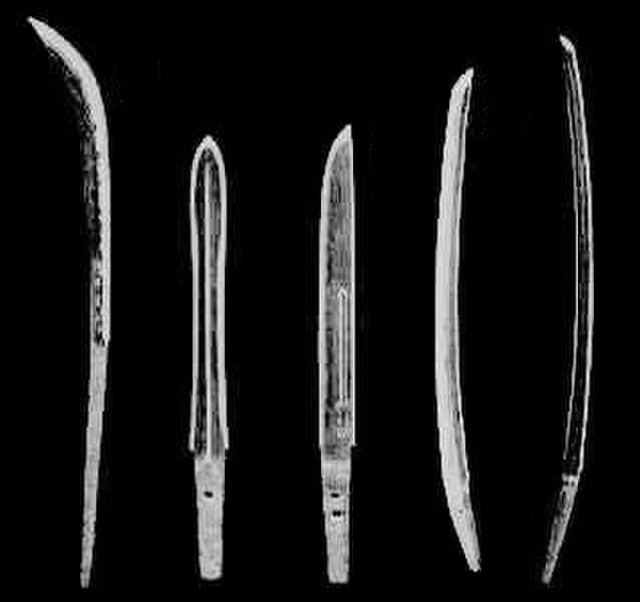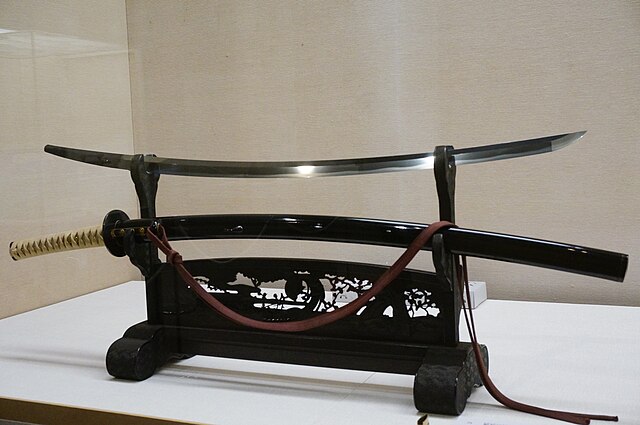The daishō —"large and small"—is a Japanese term for a matched pair of traditionally made Japanese swords (nihonto) worn by the samurai class in feudal Japan.
Daishō style sword mounting, gold banding on red-lacquered ground. 16th century, Azuchi–Momoyama period. Important Cultural Property. Tokyo National Museum.
Daishō mountings with ice crack pattern design. Edo period, Designated as Important Mounting, The Japanese Sword Museum
Daishō style handachi "half tachi" sword mounting, silver stream design on green lacquer ground. 16th–17th century, Azuchi Momoyama-Edo period. Tokyo National Museum.
Daishō for formal attire with black scabbard, hilt winding thread and white ray skin hilt, which were regulated by the Tokugawa Shogunate. Daishō owned by Uesugi clan. Late Edo period.
A Japanese sword is one of several types of traditionally made swords from Japan. Bronze swords were made as early as the Yayoi period, though most people generally refer to the curved blades made from the Heian period (794–1185) to the present day when speaking of "Japanese swords". There are many types of Japanese swords that differ by size, shape, field of application and method of manufacture. Some of the more commonly known types of Japanese swords are the uchigatana, tachi, ōdachi, wakizashi, and tantō.
Japanese swords. Two tachi with full mountings (middle and bottom right), a sword with a Shirasaya-style tsuka (top right), a wakizashi (top left), and various tsuba (bottom left).
A range of Japanese blade types, from left to right: naginata, ken, tantō, katana (uchigatana) and tachi (not to scale).
Tachi. The blade was made by Masatsune. Blade, 12th century; mounting, 18th century. Tokyo National Museum
A katana forged by Hizen Tadayoshi I. (Saijo Ō Wazamono) Azuchi–Momoyama period. (top) Katana mounting, Late Edo period. (bottom)








